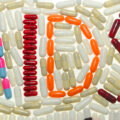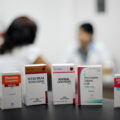HIV therapy: types and names of drugs
Although modern medicine is developing quite rapidly these days and has made significant progress in the prevention and treatment of HIV infection, there are still more than 33 million people worldwide with this diagnosis. Every year, this disease is fatal for millions of people. Acquired immunodeficiency syndrome is spreading at an increasing pace throughout the countries of Eastern Europe and Ukraine. Therefore, the main task of the All-Russian Health Organization is to find ways to prevent the development of this disease, as well as improve the methods that therapy contains for HIV-infected people.
Impact of HIV infection
The disease affects immune cells CD4+ T lymphocytes, which have another name - helpers. These lymphocytes are responsible for the immune system at the cellular level, that is, the body's ability to fight infection. Over time, the virus infects an increasing number of lymphocytes. Cells infected with the virus die. In this regard, the number of CD4+ T lymphocytes is rapidly decreasing, this leads to a decrease in cellular immunity, and then the production of antibodies that bind foreign substances when they enter the body decreases.
Then the virus disrupts the work of other cells that neutralize foreign substances that enter the body. At the same time, the immune system becomes increasingly weakened, which leads to infection with HIV-related diseases (tuberculosis, hepatitis B, and others).
At the most advanced levels of the disease, tumors of malignant origin and acquired immunodeficiency syndrome (AIDS), the last stage of HIV, may occur. If there is no therapy for HIV infection, then the period from diagnosis of HIV to the development of AIDS takes 10-15 years.
The main difficulty in combating this dangerous disease is associated with increased variability of the protein, which is an integral part of the virus envelope. It is because of this that the immune system cannot produce antibodies that can neutralize the virus as it exits the cell, preventing its further development and the death of lymphocytes. Therefore, to date, no anti-HIV therapy can provide complete recovery.
HIV therapy
So what therapy is prescribed for HIV? Modern HIV therapy contains a set of measures aimed at reducing the spread of the virus. There are several methods of treating this dangerous disease.
HIV gene therapy is a new solution in the treatment of this complex disease. This HIV therapy has its pros and cons. The main advantage is that its effectiveness is constantly increasing. When answering the question what is the best therapy for HIV, we can safely answer that it is genetic, because its effectiveness and success in treating the disease have been confirmed, but at the same time, some more developments are needed to increase efficiency.
The disadvantages of this treatment method are that during the therapy there is a risk of destruction of internal physical functions when new genes are introduced. If any stage of the treatment process is not done correctly, the patient will face even greater difficulties compared to what he had before.
Another type of treatment is HIV injection therapy. This type of treatment, which consists of administering antiretroviral drugs, is much more effective than the pills used in HIV therapy. This became known as a result of ongoing research in which fifty scientific centers throughout the world took part.
About 300 patients participated in the study. The following HIV therapy drugs were used for treatment: a combination of the integrase inhibitor cabotegravir and the non-nucleoside reverse transcriptase inhibitor rilpivirine. The medicine was injected intramuscularly over a month or two. After two years, it was revealed that the majority of subjects receiving this type of therapy had much higher viral suppression than when taking pills. The majority of patients who participated in the experiment wished to continue the injection method of combating HIV.
Long-acting HIV therapy is widely used, which means the use of drugs with a long period of therapeutic effect and the substance they contain compared to conventional drugs. In the process of prolonged therapy, part of the therapeutic substance must be released continuously over a certain period, while an acceptable level of the substance is maintained in the body and a constant decrease or increase in the substance is not allowed.
During a single injection of a substance into the human body, in the form of any dosage form, in the blood and tissue cells, a certain concentration of this substance is formed, which can change depending on the intensity of absorption, distribution throughout the body, metabolism and excretion. The length of time a drug stays in the body depends on its half-life.
Tablets and capsules
The names of drugs used as therapy for HIV are as follows:
- Lamivudine (ZTS) – Epivir. Available in tablets of 0.15 g. Taken twice a day. Side effects are not observed often and include nausea, diarrhea, depression;
- Azidothymidine plus lamivudine – Combivir. It is a combination drug used twice a day. There are virtually no side effects;
- Stavudine (4dT) – Zerit. Available in the form of capsules of 0.30 and 0.40 g. Take one twice a day (dosage may vary depending on the person’s body weight). If you believe the ongoing research, then this drug penetrates the central nervous system and prevents impairment of mental abilities during the development of AIDS. The presence of a side effect in the form of neuropathy makes it impossible to take the drug together with zalcitabine.
Currently, the use of the drug dexamethasone in HIV therapy has not been proven effective.
Treatment of HIV during pregnancy
Treatment of HIV during pregnancy is limited to taking ARV therapy medications. Pregnancy in women with HIV infection occurs with the use of special chemical medications. To prevent infection of the fetus, the following methods are used:
- prescribe treatment to women who were infected before conception and are planning a pregnancy;
- chemotherapy is used for all infected people;
- ARV therapy drugs are used during childbirth;
- after the child is born, he is prescribed the same treatment.
When a woman becomes pregnant by a man infected with HIV, both of them are prescribed ARV therapy, regardless of the woman’s test results. Therapy is carried out during pregnancy and after the birth of the child. Particular attention is paid to those women who use drugs.
Modern methods of treating HIV
New HIV therapy in 2019 involves taking new types of medications that slow the progression of HIV. Currently, drugs with a different mechanism of action on HIV are being studied. Some of them lead to HIV sticking together, while others prevent it from entering cells. It is hoped that the new HIV therapy of 2019 will solve the problem of resistance.
Many people are concerned about the question of how to buy HIV therapy? After all, many are faced with a lack of necessary medicines. Purchasing HIV therapy is quite expensive. They are purchased on special websites on the Internet. Typically the patient pays half the cost. And the second half after the acquisition.




